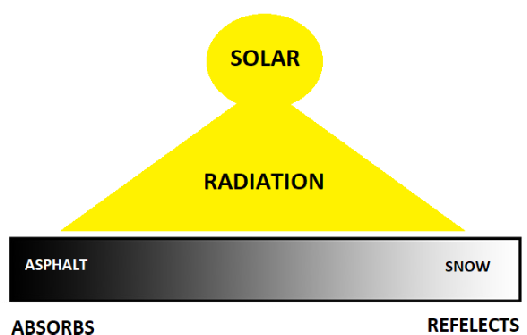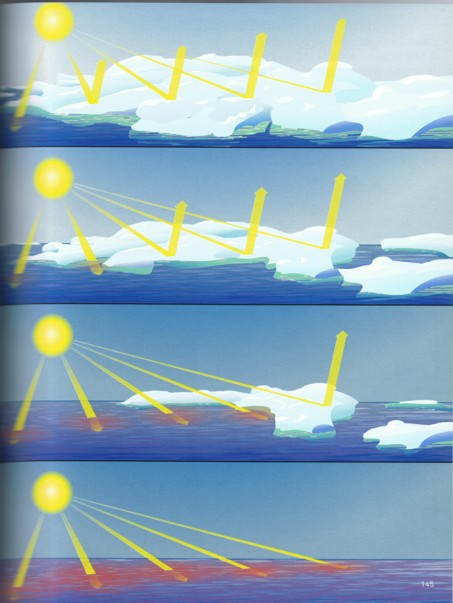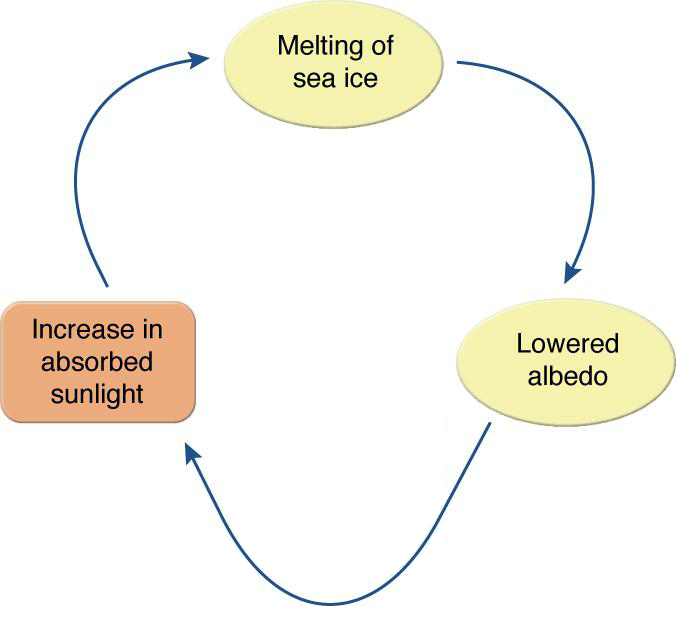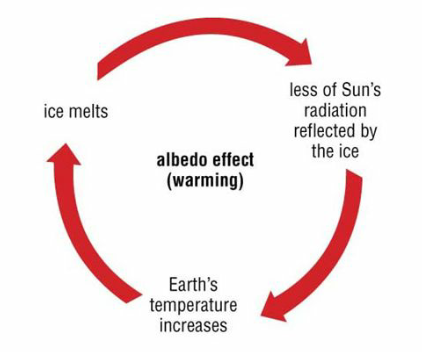ALBEDO SIMPLIFIED
Albedo is measured by the Solar Reflectivity Index (SRI). The SRI indicates the percentage of solar radiation that is bounced back through the earth’s atmosphere into outer space before it heats up any mass or air.
- Solar energy that hits dark coloured surfaces makes a photo-thermal conversion. This photo thermal conversion changes short wave solar energy in to longer wave infrared radiant heat, that is trapped by earth’s atmosphere.
- Solar energy that hits light coloured surfaces is reflected back into space before it makes a photo-thermal conversion. The solar energy enters, is reflected and leaves our planet without heating it up.

REFLECTIVENESS
White and light coloured horizontal surfaces
- increase the albedo
- reducing the ambient air temperature.
Ice- and snow-covered areas have high albedo.
Ice-covered Arctic and Antarctic areas reflects solar radiation that otherwise would be absorbed by the oceans or thermal converted into atmospheric heat.
The proportion of Earth's surface that is covered by snow and ice has is linked to the absorption of heat.
Low albedo (dark surfaces) leads to higher uptake of energy and, hence, warming.
When more ice and snow melt, there will be more dark surfaces. This is therefore a self-reinforcing effect. Climate change in the Arctic is consequently important for the development of climate change globally.



NOTICING
- Converting half a city’s rooftops to with roofs or green roofs,
- It is estimated that urban temperatures can be diminished up to 3 degrees Celcius by converting half a city’s rooftops

 ALBEDO AND REFLECTIVENESS
ALBEDO AND REFLECTIVENESS
Ice-covered Arctic and Antarctic areas reflects solar radiation that otherwise would be absorbed by the oceans or thermal converted into atmospheric heat.
The proportion of Earth's surface that is covered by snow and ice has is linked to the absorption of heat…
Read more…
GREEN HOUSE EFFECT
CO2 sticks around
 CO2 remains in the atmosphere longer than the other major heat-trapping gases emitted as a result of human activities. It takes about a decade for methane (CH4) emissions to leave the atmosphere (it converts into CO2) and about a century for nitrous oxide (N2O).
CO2 remains in the atmosphere longer than the other major heat-trapping gases emitted as a result of human activities. It takes about a decade for methane (CH4) emissions to leave the atmosphere (it converts into CO2) and about a century for nitrous oxide (N2O).
After a pulse of CO2 is emitted into the atmosphere, 40% will remain in the atmosphere for 100 years and 20% will reside for 1000 years, while the final 10% will take 10,000 years to turn over. This literally means that the heat-trapping emissions we release today from our cars and power plants are setting the climate our children and grandchildren will inherit.




















 ALBEDO AND REFLECTIVENESS
ALBEDO AND REFLECTIVENESS CO2 remains in the atmosphere longer than the other major heat-
CO2 remains in the atmosphere longer than the other major heat-